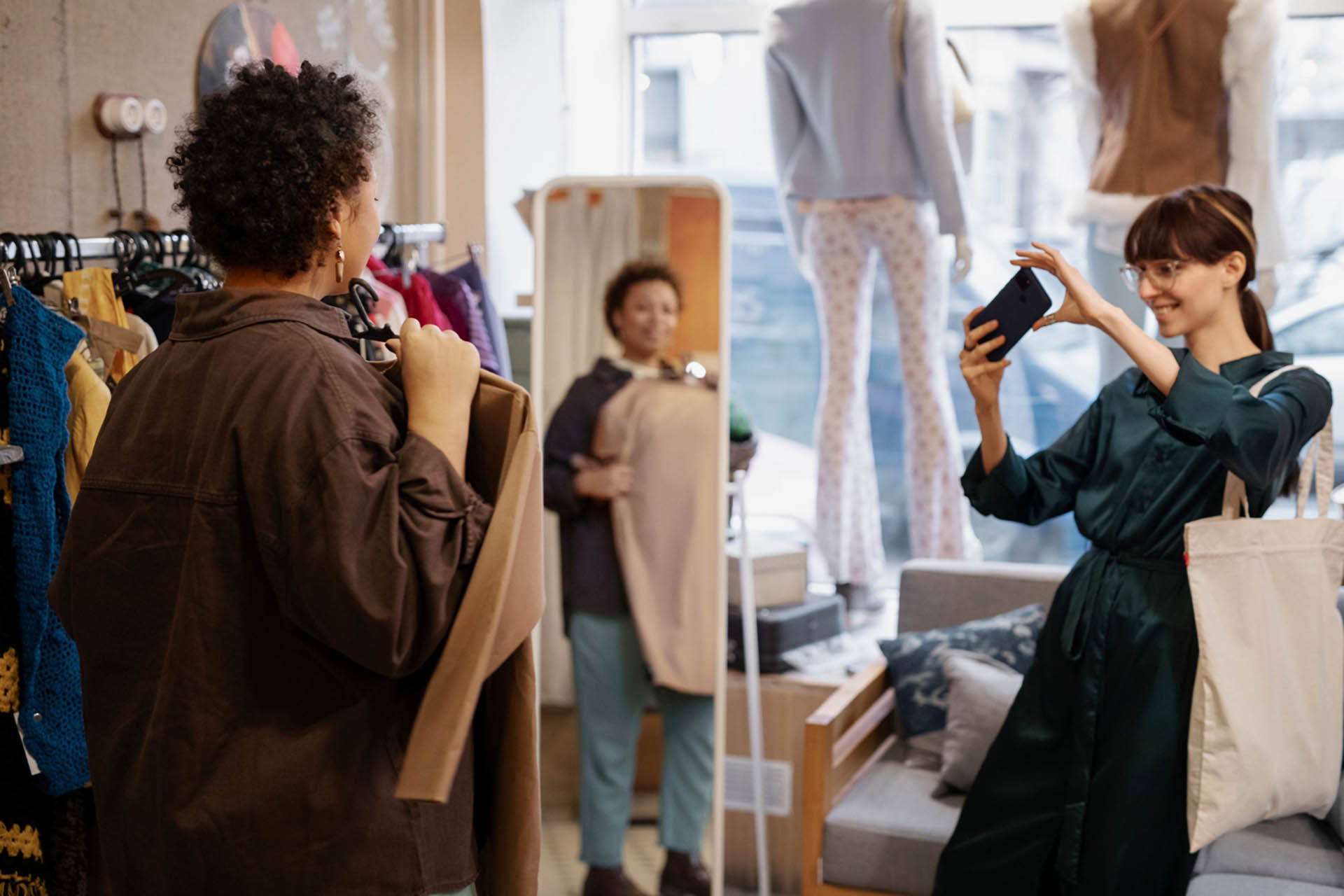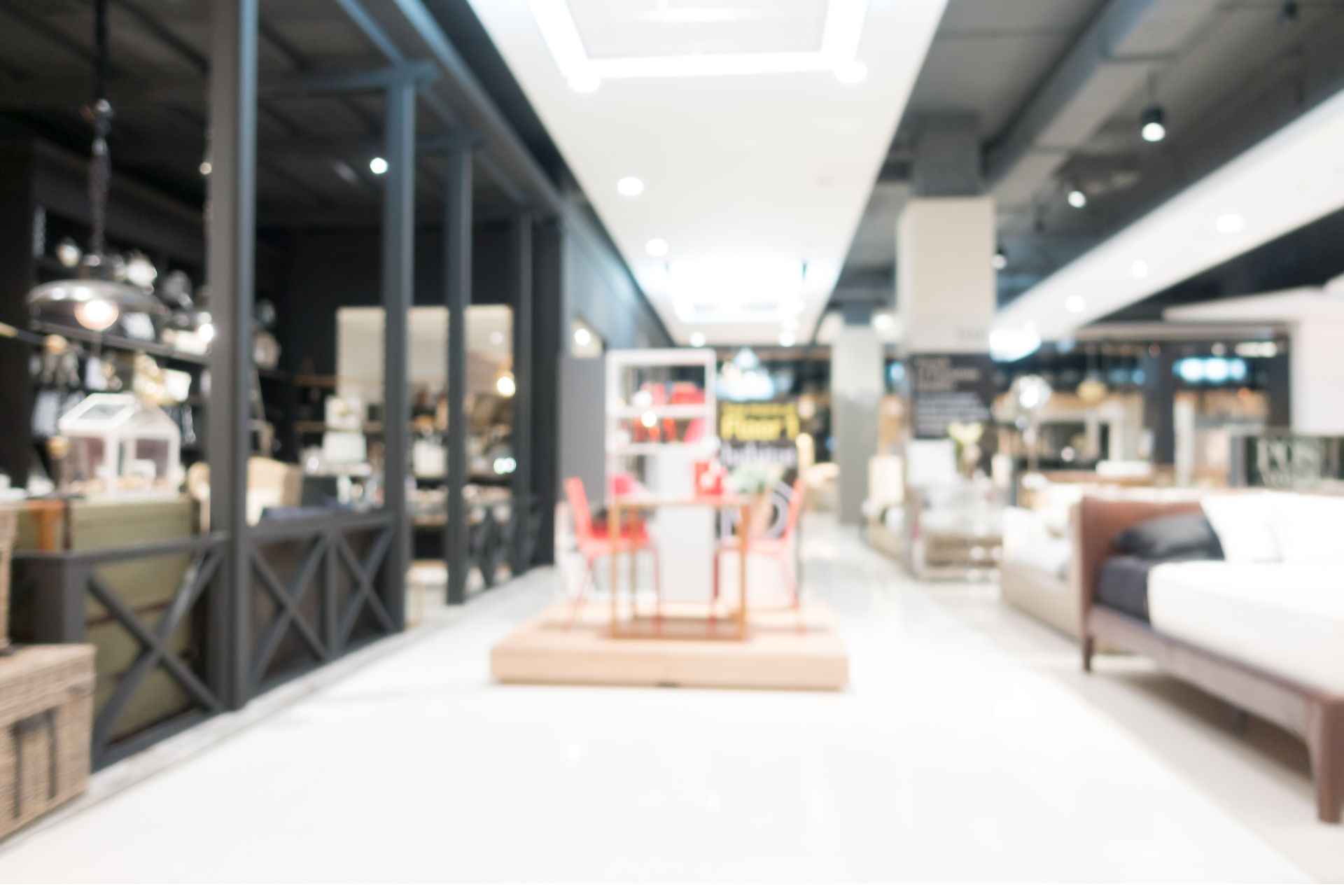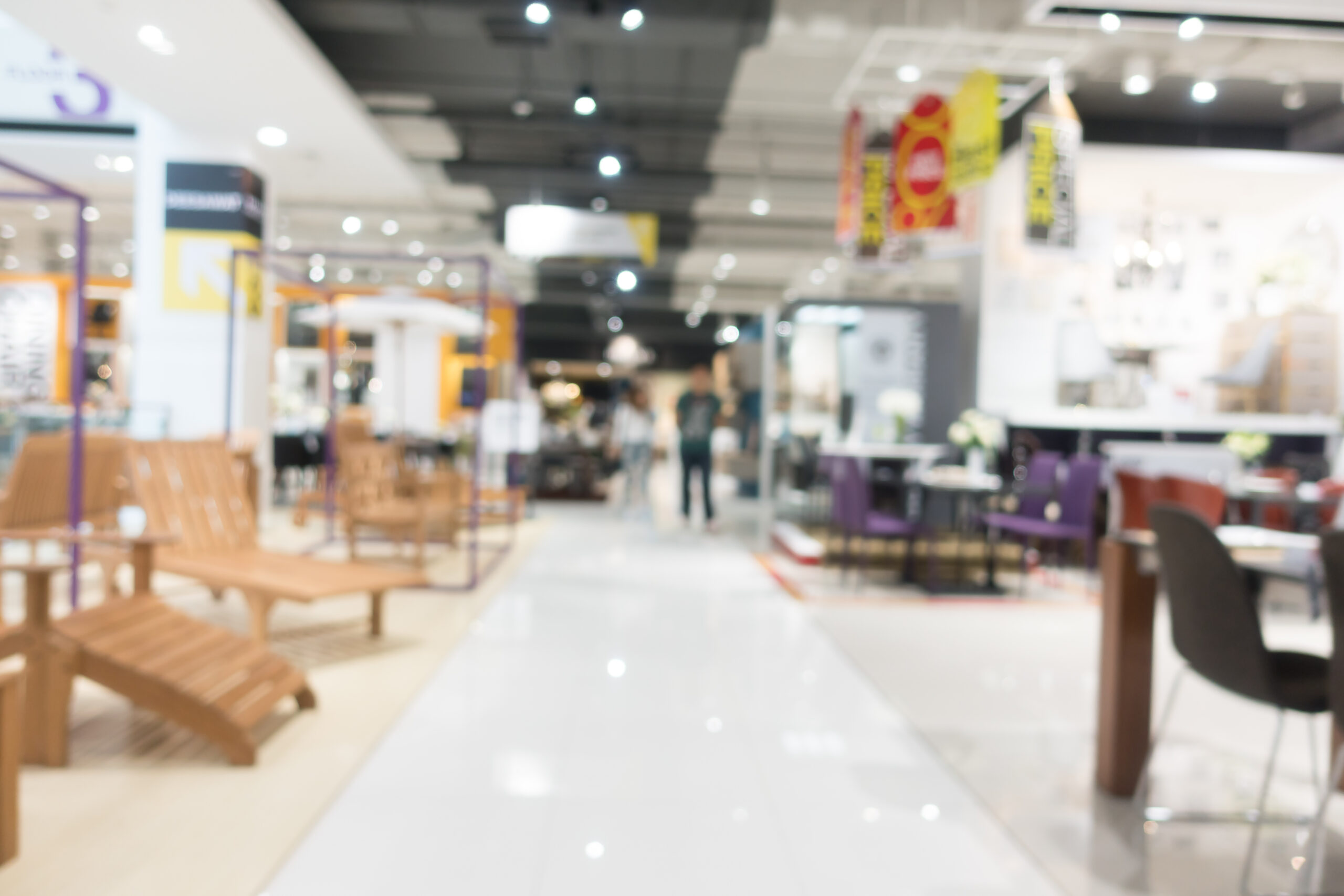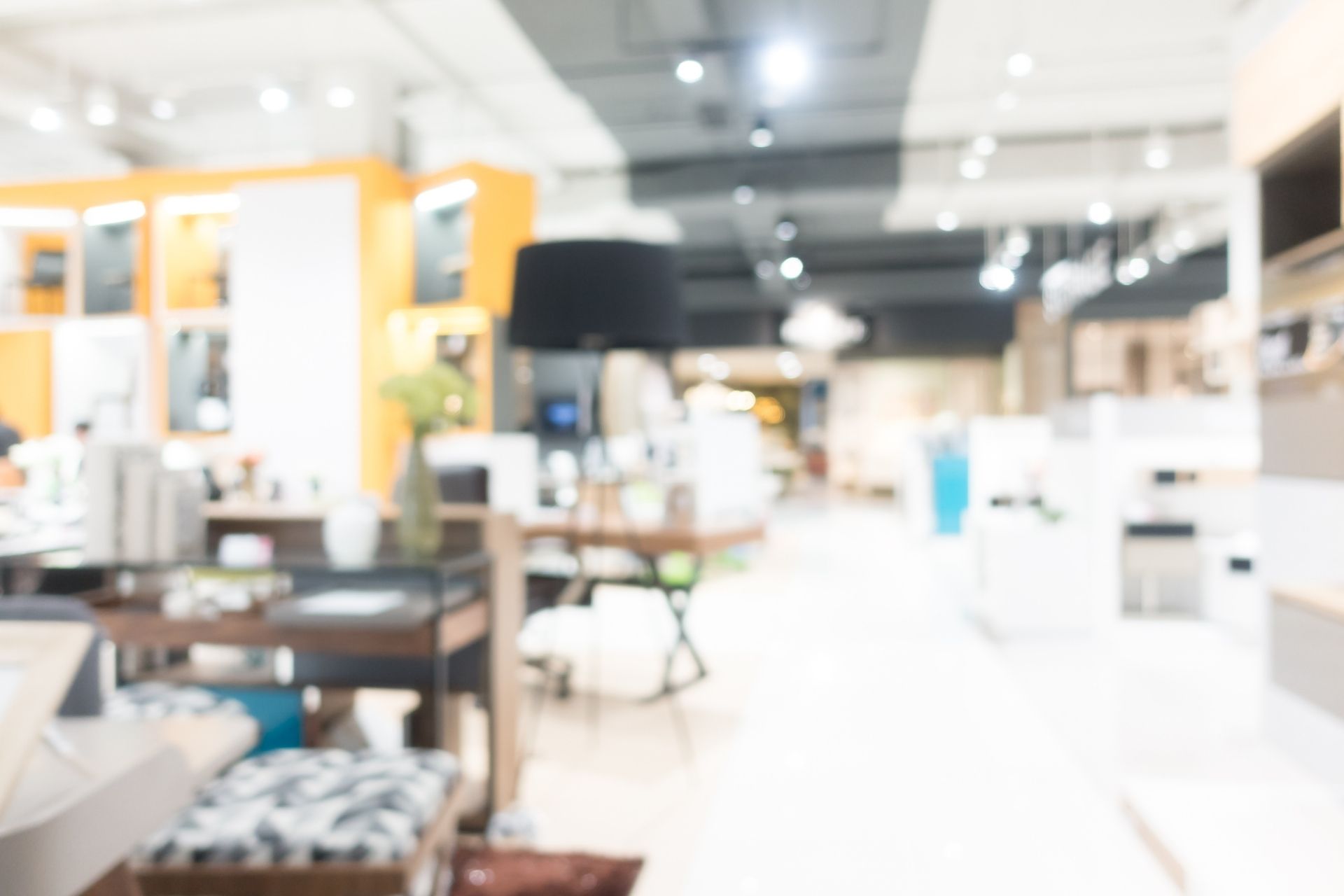Opening a boutique in New York is exciting — you’re part of a vibrant fashion and retail scene, whether you’re in bustling Manhattan, trendy Brooklyn, or a charming upstate town. But with rent often high in cities and space sometimes limited anywhere in the state, one of the most important things to consider is your decor.
The way your boutique looks can make customers feel welcome and eager to shop. Even in a small city storefront, a cozy suburban corner, or a boutique in a picturesque upstate village, the right design can turn a little space into something big in style and function.
With a little creativity and planning, you can design a boutique that feels open, stylish, and practical, no matter where it’s located.
11 Very Small Boutique Interior Design Ideas
By using creative ideas, even the smallest boutique can feel like a stylish destination — the kind of place your customers can’t resist stepping into.
1. Open floor plans with clear pathways
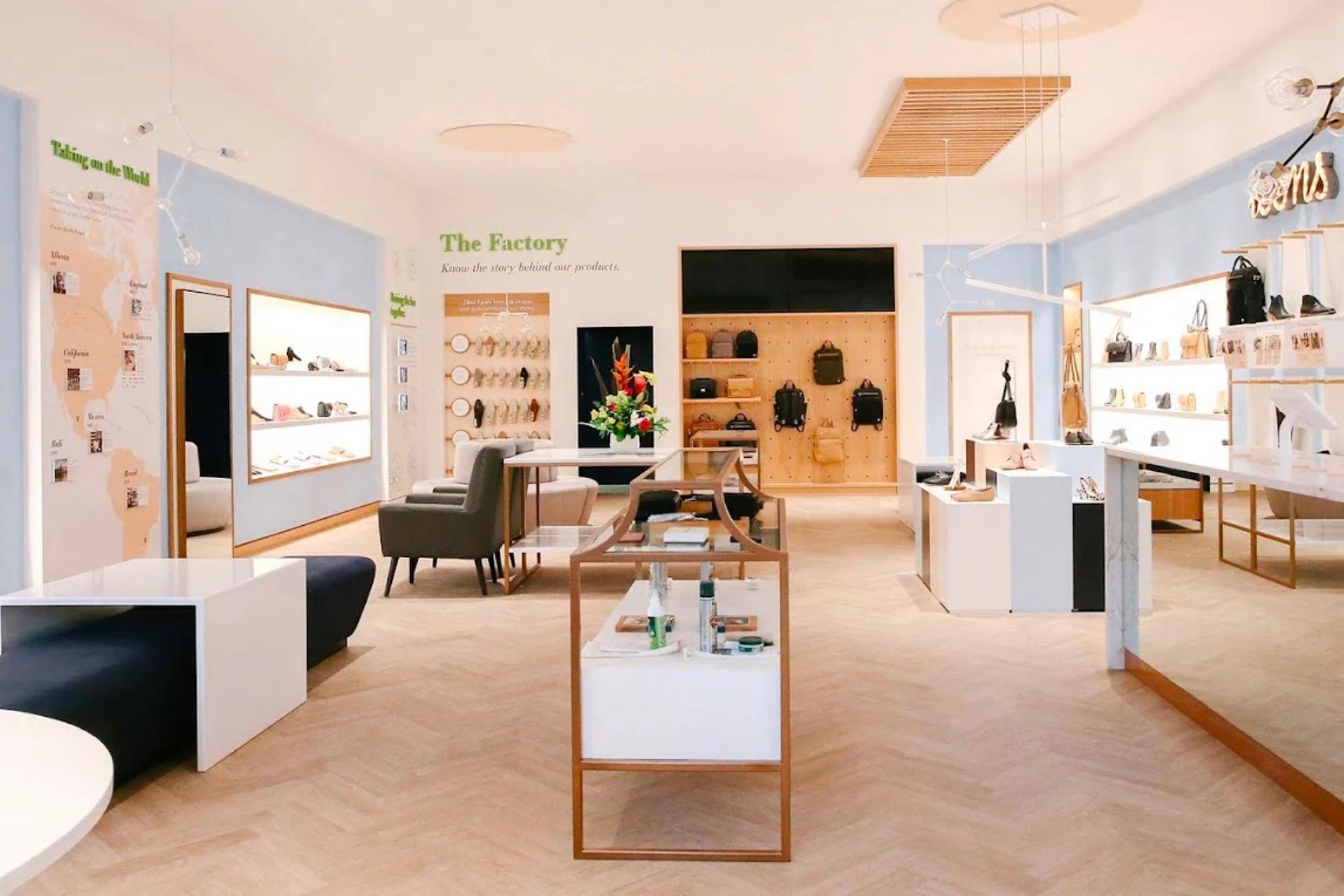
When customers step into your boutique, they should be able to move around easily. Avoid blocking the main walkway with bulky racks or counters. Instead, keep the center area open and place displays along the sides. This not only makes your shop feel bigger but also encourages shoppers to explore.
Think about the way small SoHo boutiques lay out their spaces — clean, simple, and easy to navigate, even when the shop is full of people.
2. Modular and flexible furniture
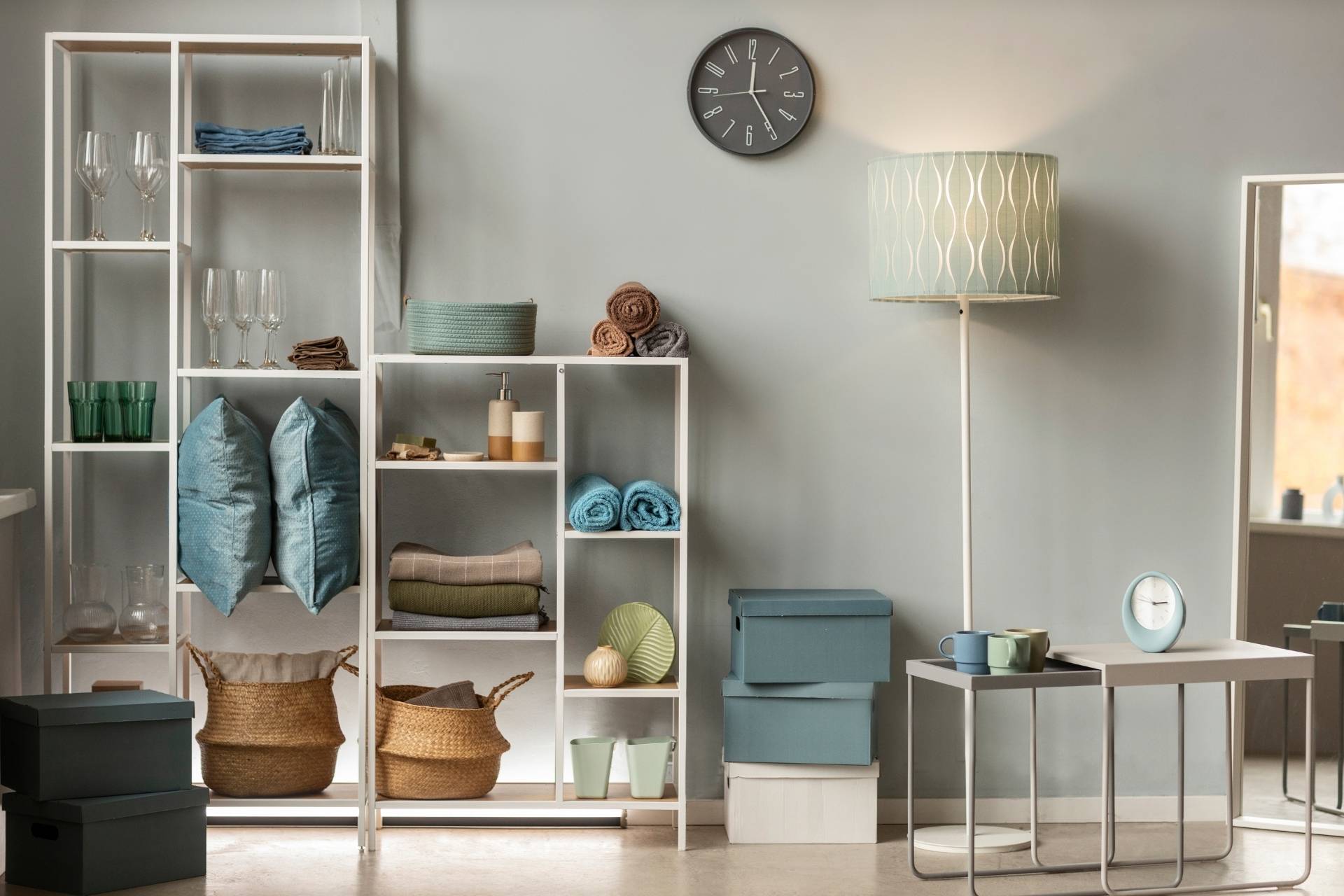
New York boutiques often need to adapt quickly, whether it’s for a seasonal collection or a weekend pop-up event. Using modular furniture, like foldable tables or movable clothing racks, gives you flexibility. You can rearrange the setup depending on what you’re showcasing without wasting space.
For example, a boutique in Williamsburg might switch from a clothing rack display during the day to a table setup for a jewelry trunk show at night, while a Buffalo shop could roll out extra racks during the holiday shopping season.
3. Vertical storage and wall displays
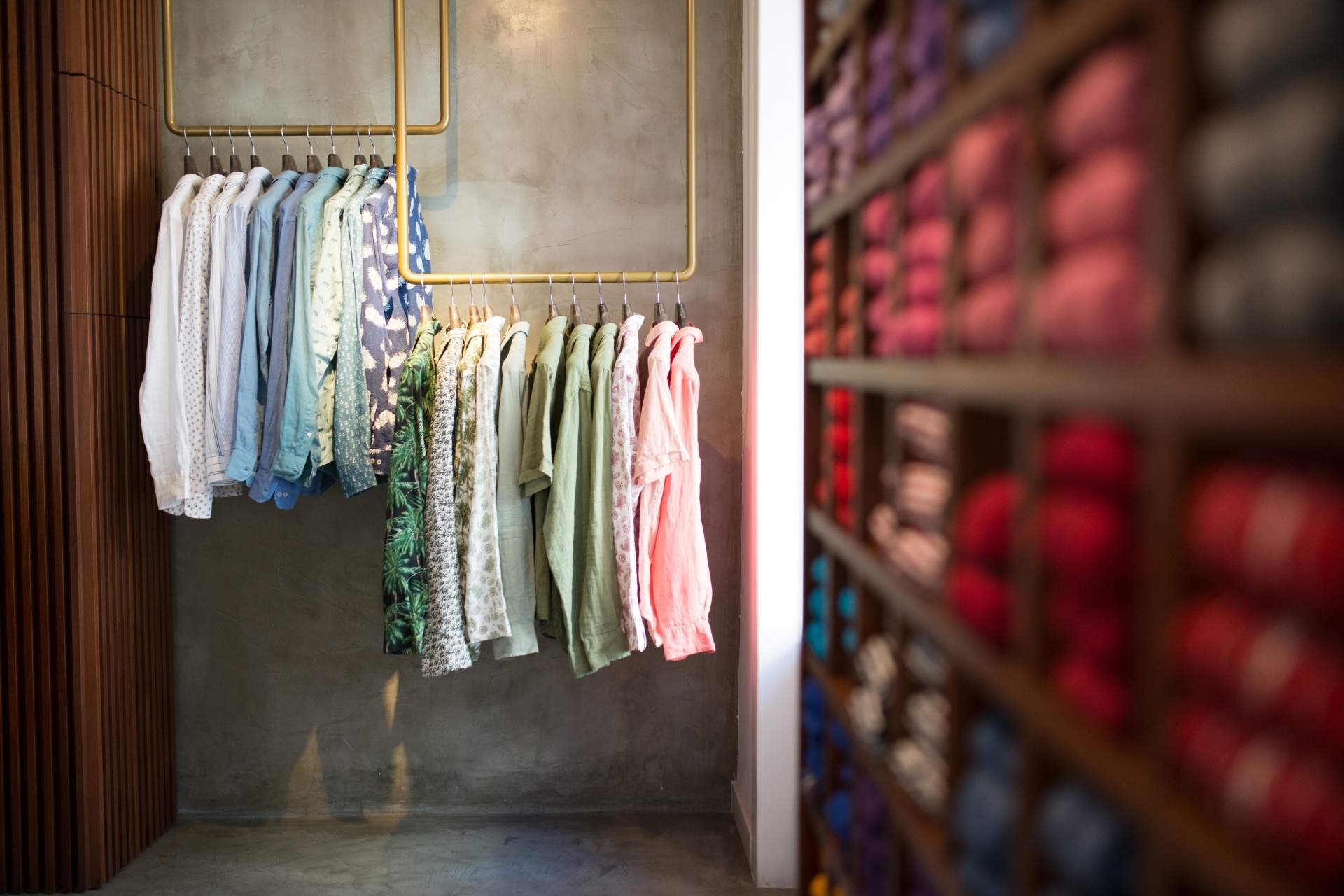
When floor space is limited, go up! Use tall shelves, pegboards, or hanging racks to display your products. This draws the eye upward, making the room feel larger.
Many New York shops, especially in smaller spaces around the Lower East Side, use wall displays to highlight accessories or folded clothes while keeping the floor clear. Upstate, in Saratoga Springs, boutiques may use tall shelving to display horse-racing–themed gifts and apparel, maximizing every inch.
4. Mirrors to add depth
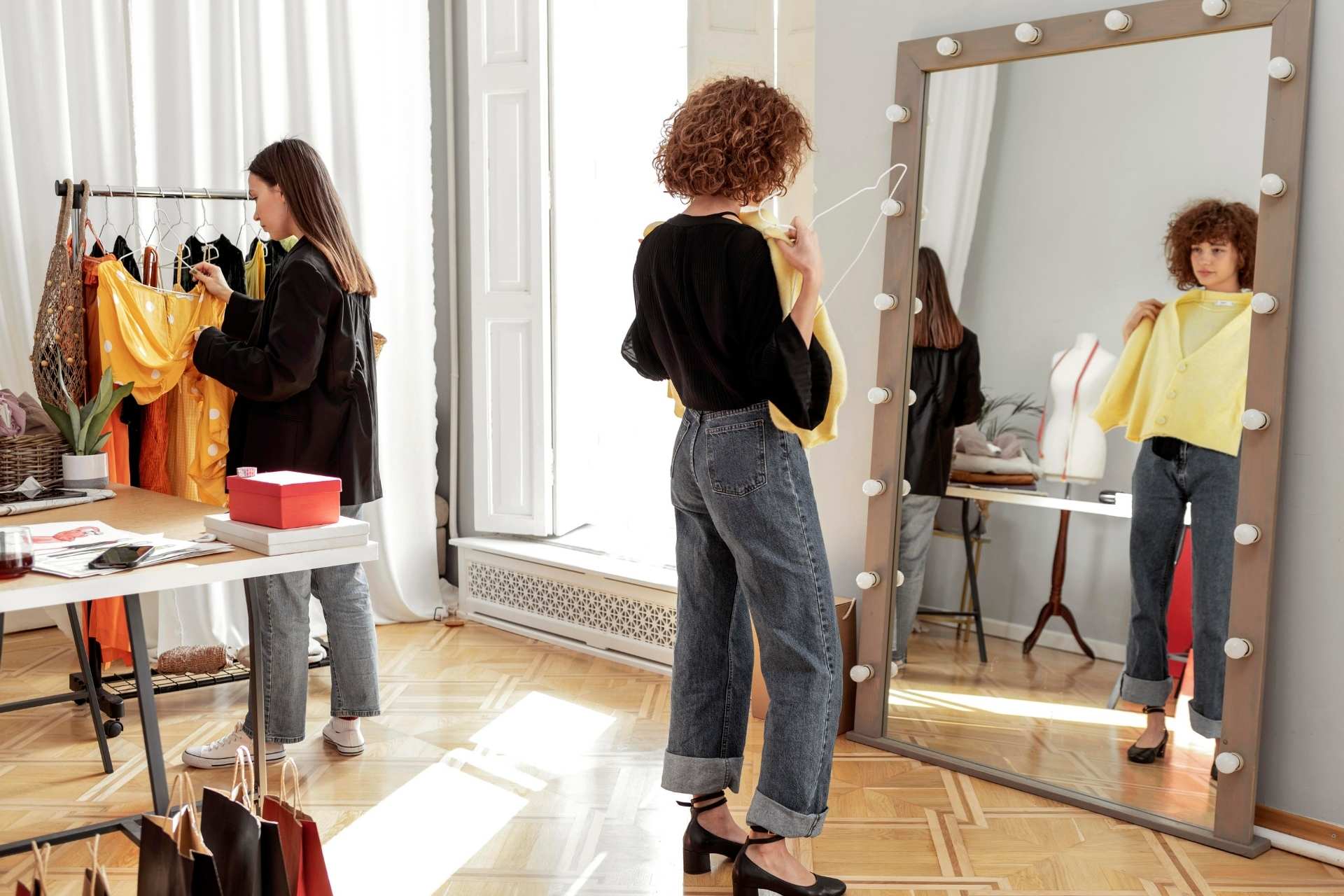
Mirrors are a small-space boutique’s secret weapon. A large mirror on the wall or even mirrored fitting room doors can make your store look twice as big. They also let customers see how great they look in your products, which boosts sales.
5. Bright & neutral color palettes
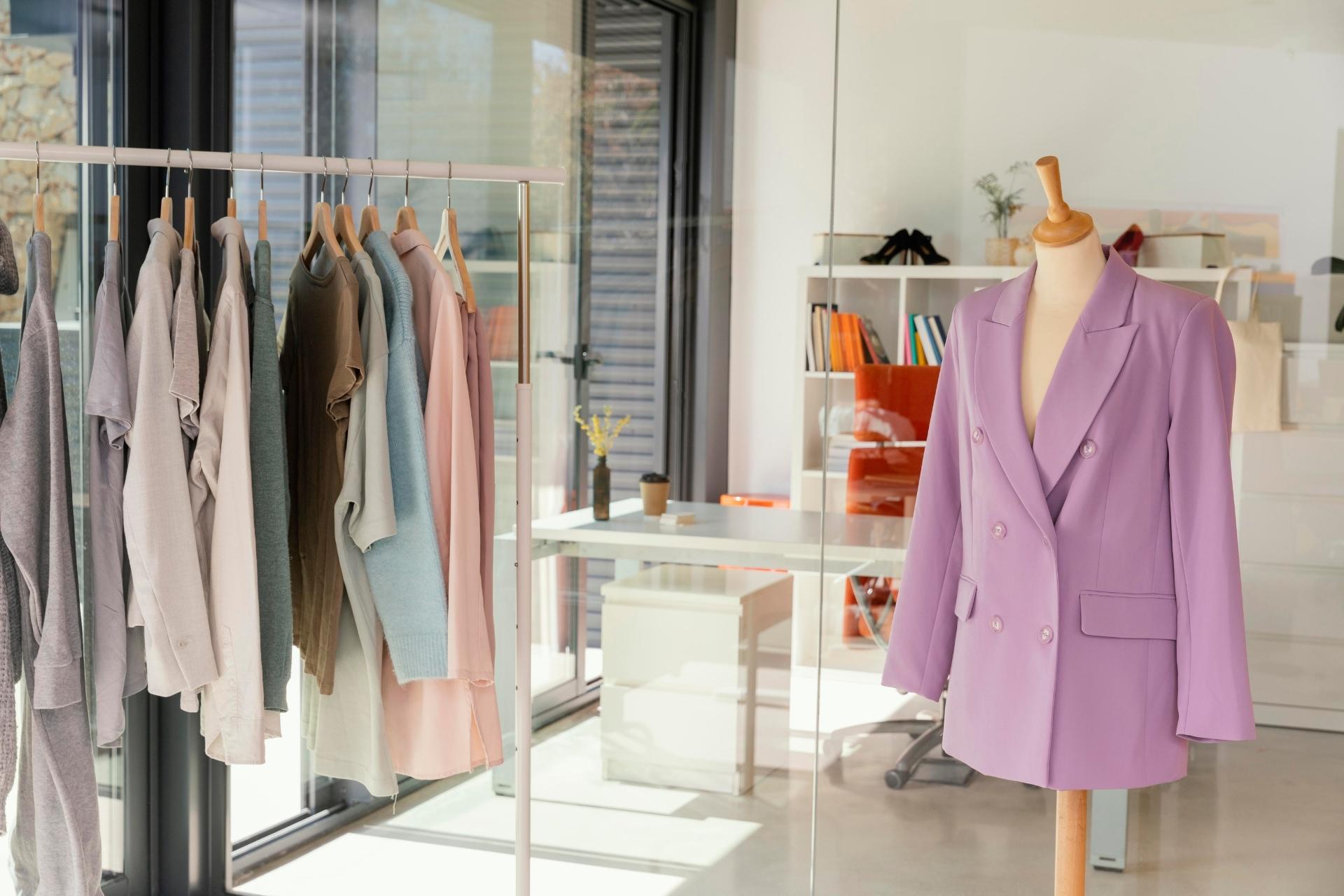
Colors affect how people feel in a space. Bright whites, light grays, and soft neutrals can make a tiny boutique feel airy and inviting. Add pops of color through your products instead of painting walls bold shades that can make the space feel smaller.
Many West Village boutiques use this trick to let their colorful clothing collections “be the decor.” Similarly, boutiques in Albany’s Lark Street district lean on neutral walls to highlight artisan goods and handmade crafts.
6. Strategic lighting
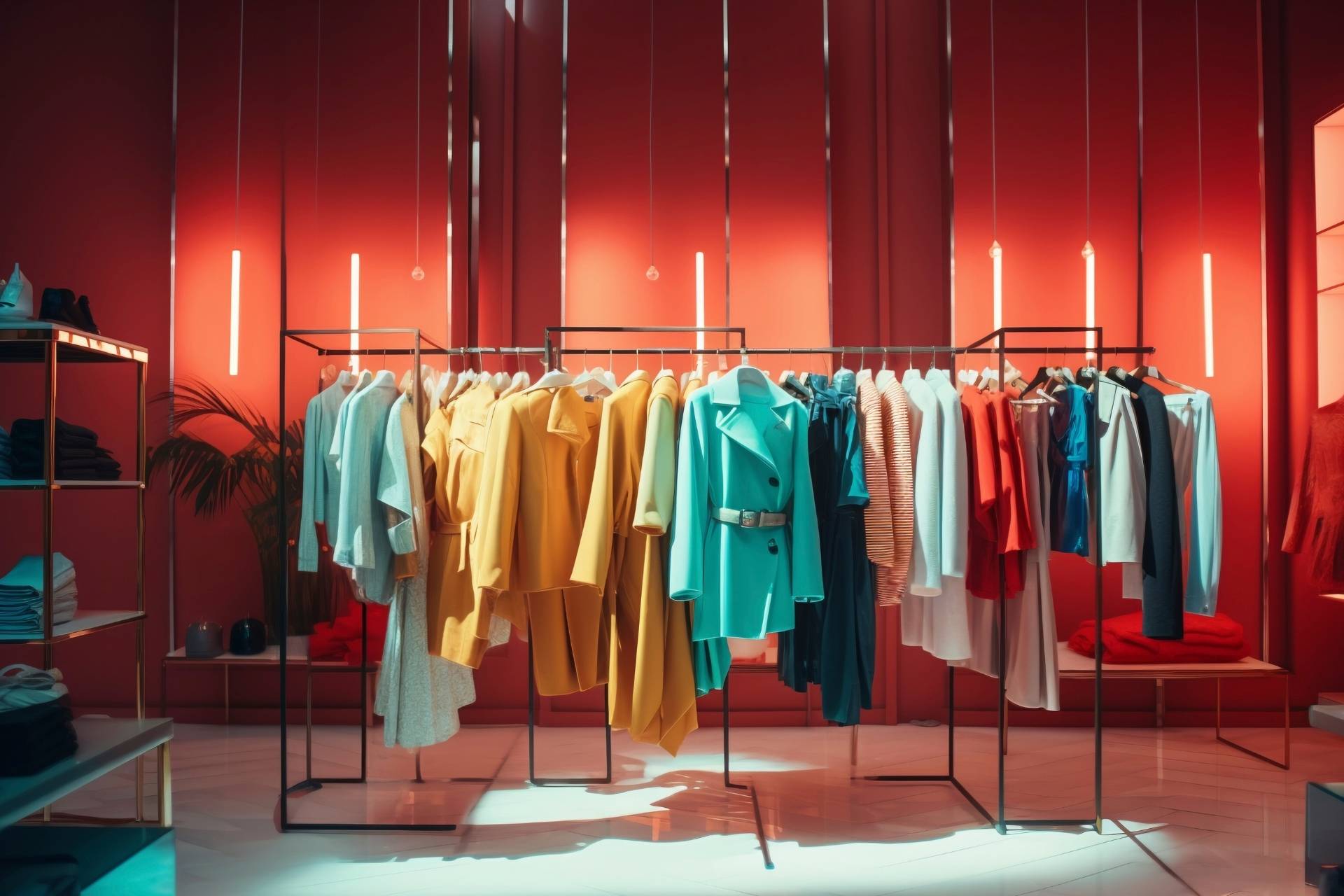
Good lighting sets the mood. Use spotlights to highlight key items, like new arrivals or bestsellers, and softer lighting in other areas to create warmth. Natural light is always a plus — if you have big windows facing a busy street, use them to your advantage. Shoppers strolling by are more likely to peek in if your store looks bright and welcoming!
7. Floating shelves and pegboards
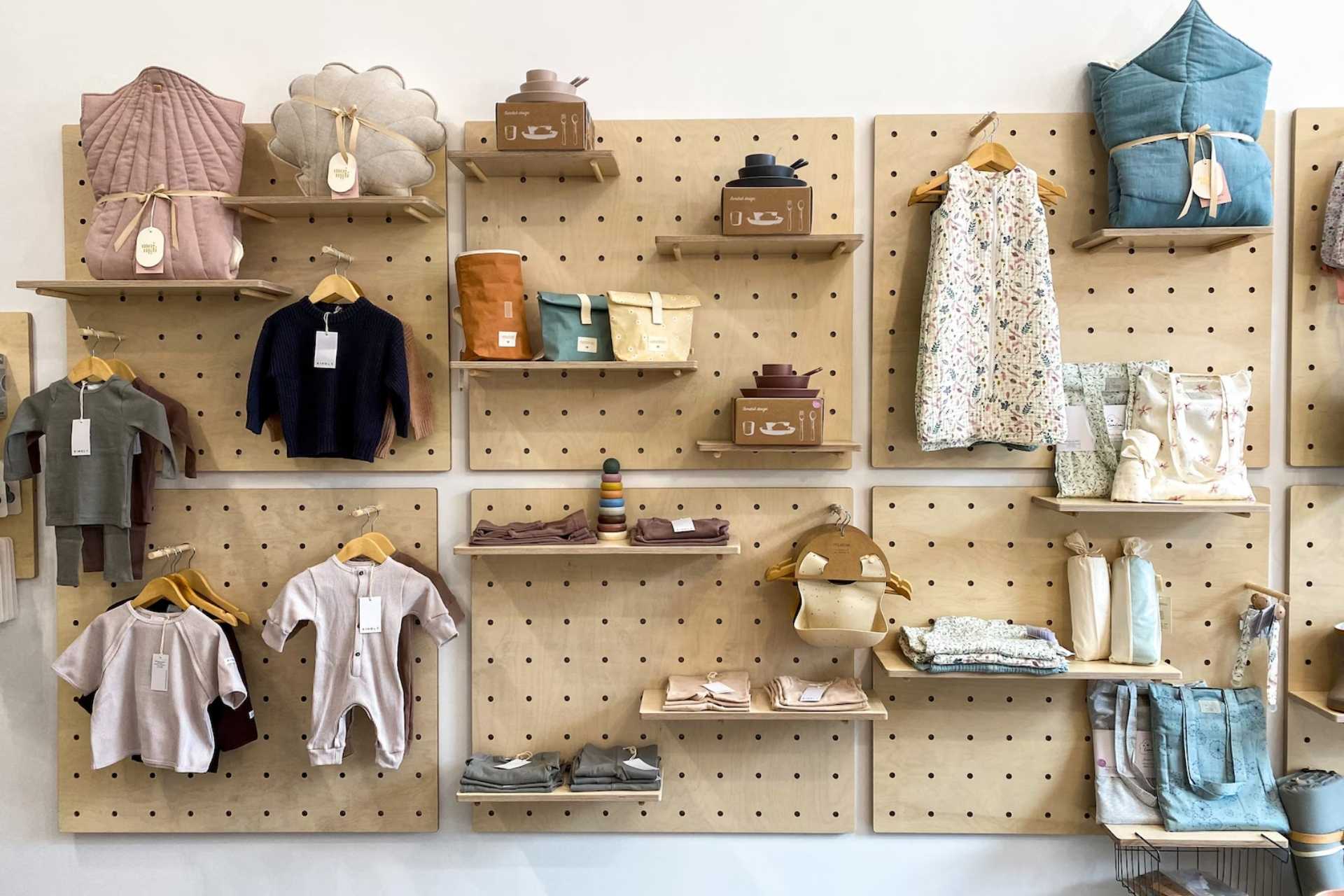
Floating shelves keep the floor clear while giving you extra display space for folded items, accessories, or décor that enhances your brand’s look. Pegboards are just as versatile — you can hang bags, jewelry, or even shoes in creative patterns that catch the eye.
Add hooks, baskets, or small shelves to your pegboard for even more storage options, and switch up the layout anytime to keep your displays fresh.
Together, these wall-mounted solutions maximize vertical space while maintaining a clean, organized feel in your boutique.
8. Minimalist clothing racks
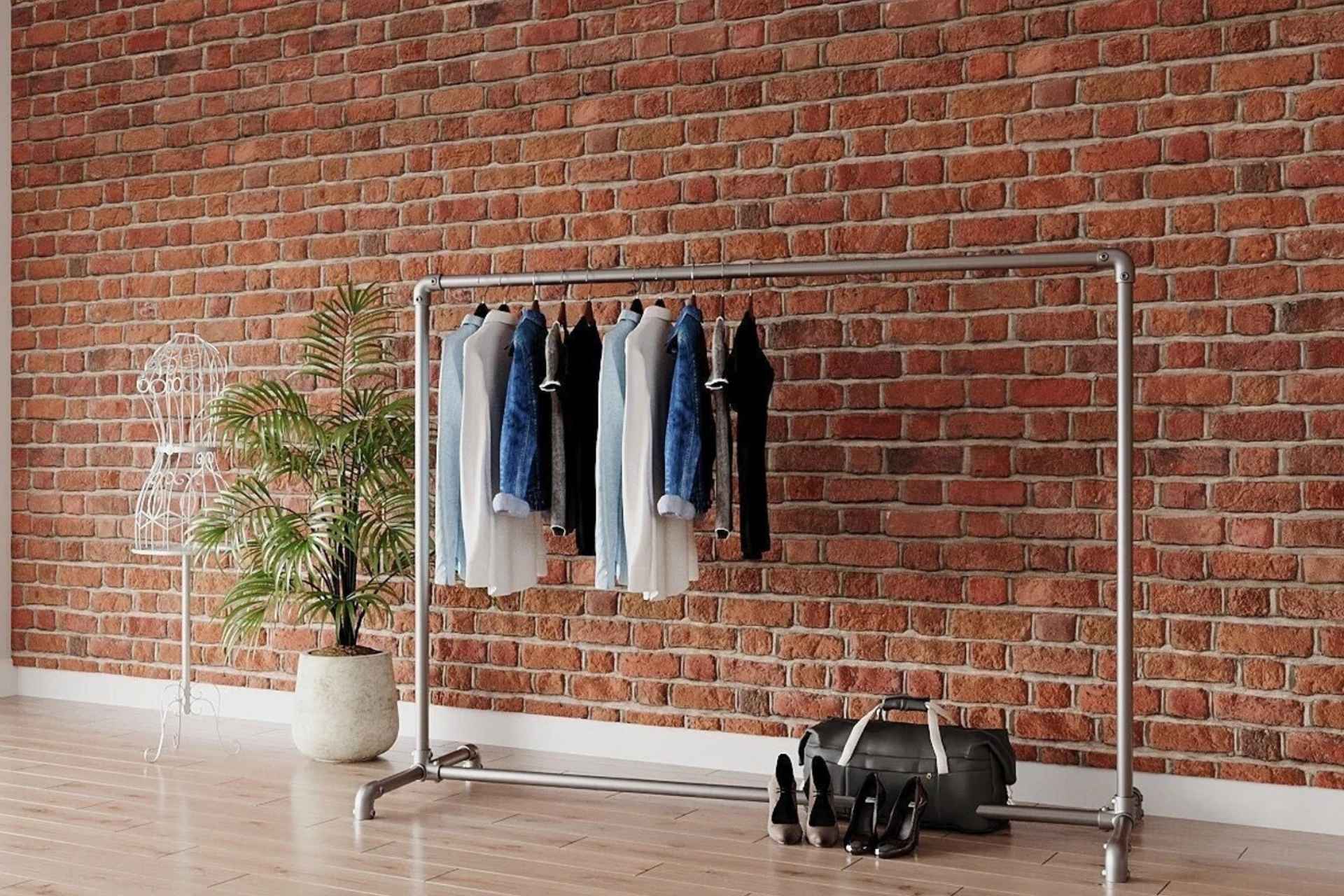
Cluttered racks can overwhelm shoppers. Instead, use sleek, minimalist racks to keep clothing organized and easy to browse. A single row of neatly spaced clothes looks more appealing than a jam-packed rack.
Many high-end boutiques in Manhattan use this method, giving each piece its own “spotlight.” In Ithaca, some boutiques highlight sustainably made pieces with the same minimalist approach so that each item stands out.
9. Multi-use counters
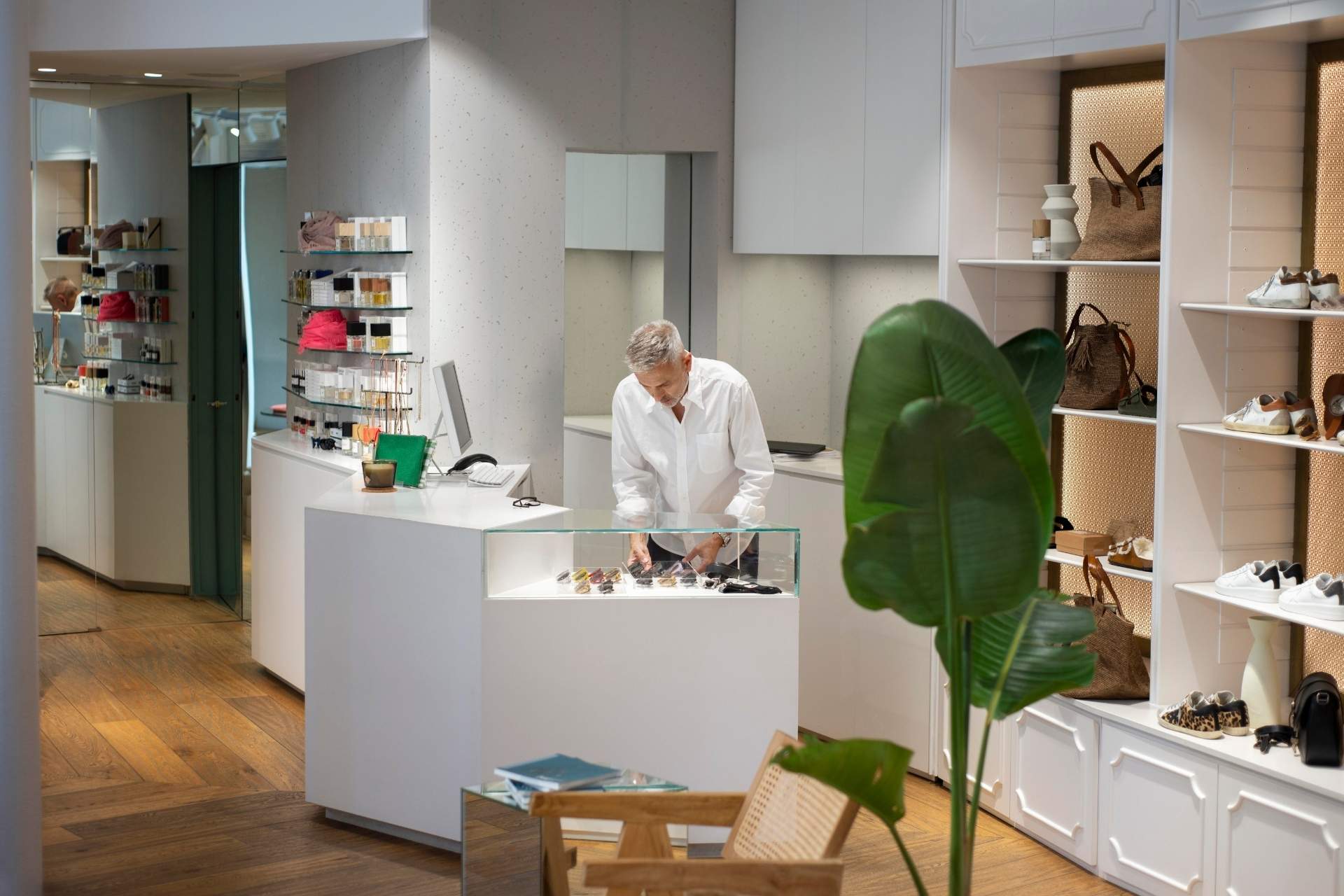
Counters don’t just have to be for checkout. In small boutiques, counters often double as display tables, storage units, or even a spot for wrapping purchases. Choose a counter with shelves or drawers underneath to maximize function without taking up more space.
10. Feature wall
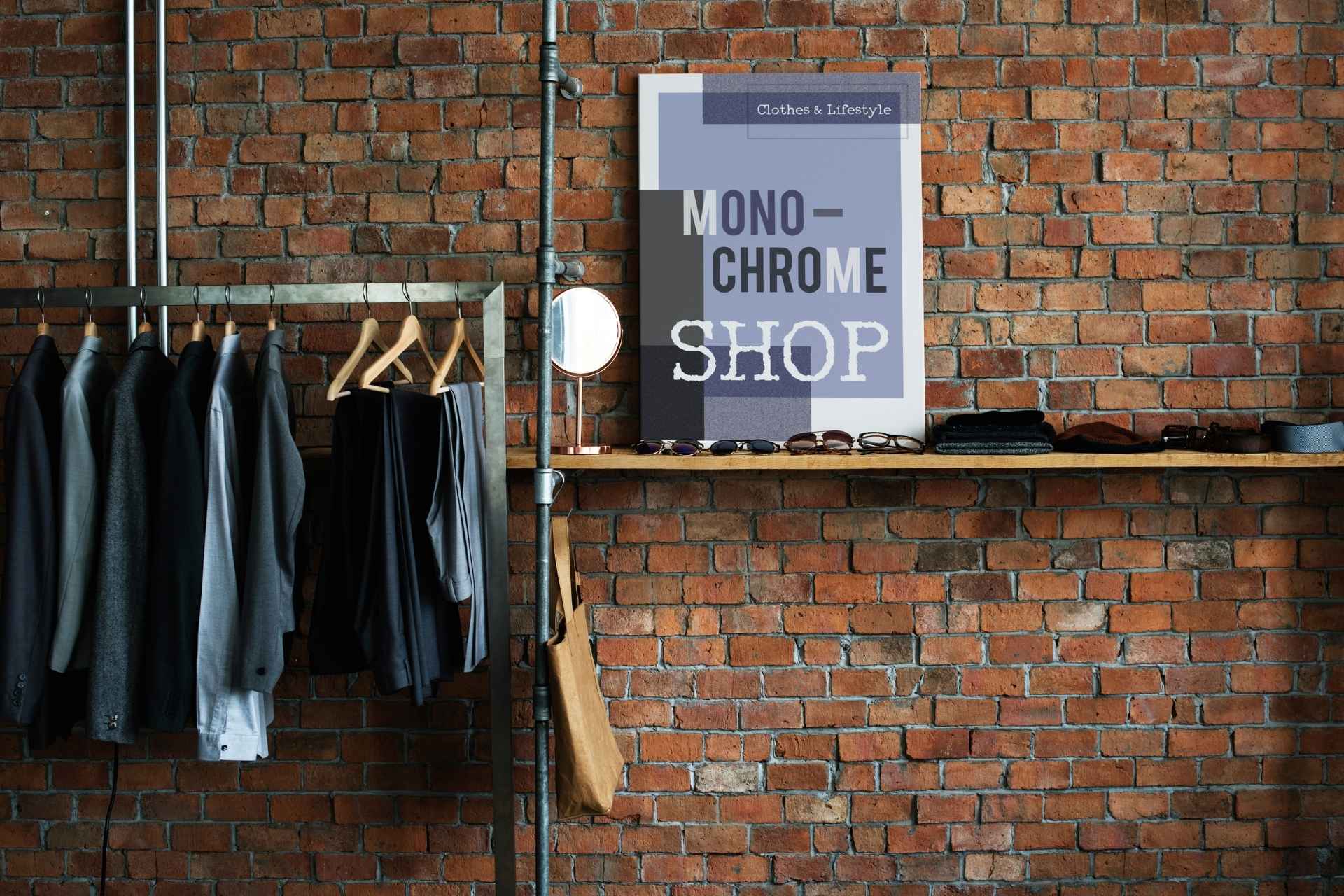
A feature wall creates a focal point that customers remember. You can paint it in a bold color, add a mural, or use textured materials like brick or wood.
In NYC, some boutiques highlight local artists by showcasing their work on a feature wall. In the Finger Lakes wine region, boutiques sometimes paint vineyard-themed murals, tying the decor to the local culture.
11. Cohesive and theme signage
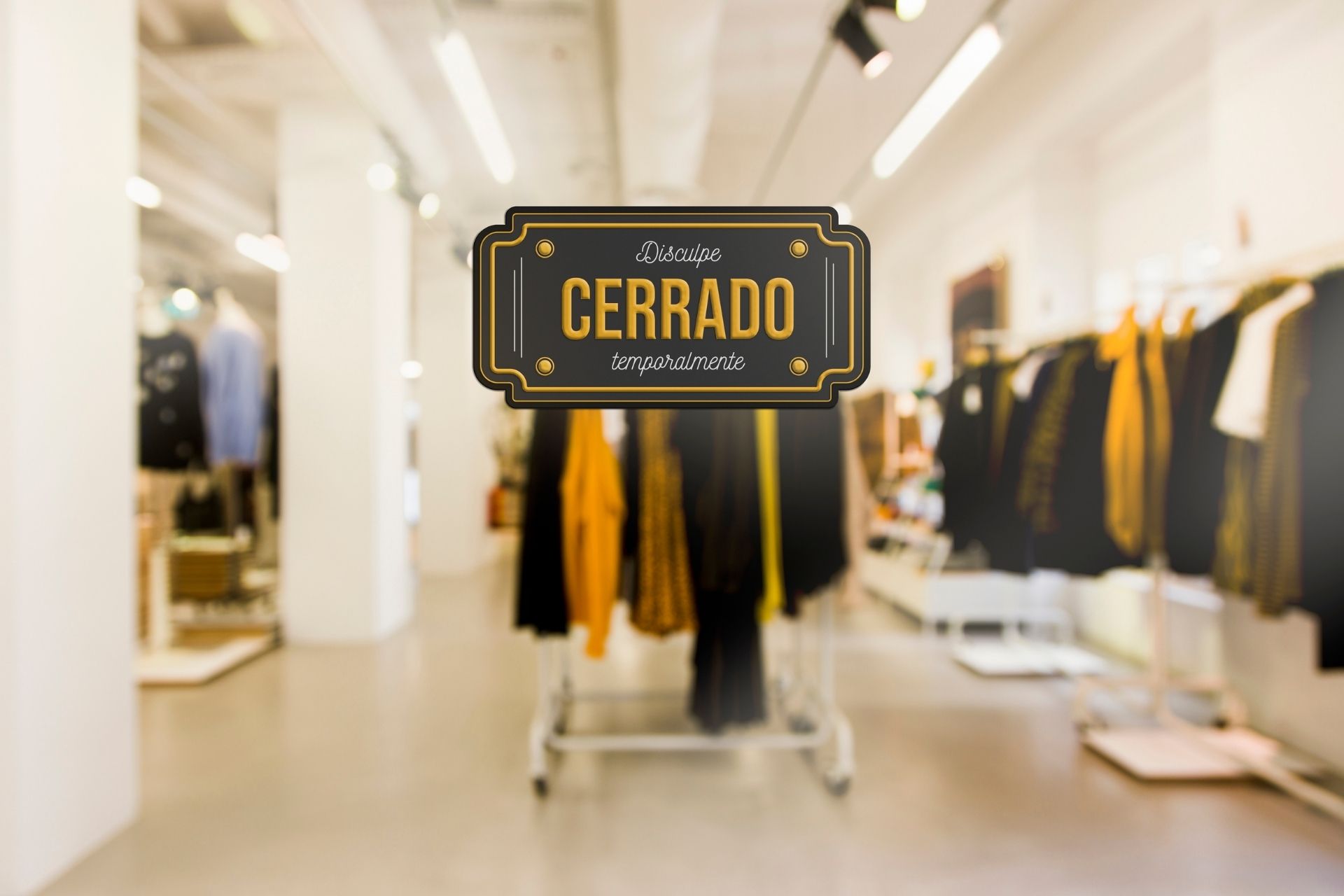
Your signage should match your boutique’s personality. From the logo above the door to price tags inside, keep the style consistent. No matter the location, cohesive signage helps your boutique look polished and memorable.
Tips for Maximizing Small Boutique Space
Even the best design ideas won’t work if you don’t use your space wisely. Here are some tips to get the most out of every inch of your boutique:
Use hidden storage
Shelves, drawers, and cabinets with doors can keep inventory or seasonal items out of sight. In small boutiques, shop owners tend to store extra stock under counters or in backroom cabinets. This keeps the front area clutter-free.
Keep aisles clear
Clear pathways make your boutique feel open and inviting. Avoid putting too many racks or displays in the middle of the room.
Even in a busy Manhattan boutique on Bleecker Street, leaving space between racks helps customers move freely and encourages them to browse more sections without feeling crowded.
Place bestsellers in prime spots
Highlight your most popular items in high-traffic areas, such as near the entrance or along the main aisle. This strategy works well in boutiques where passersby can immediately see the items everyone is talking about. Featuring bestsellers draws attention and can increase sales while keeping the store organized.
Regularly declutter
Removing outdated, damaged, or slow-selling items keeps your boutique organized and uncluttered, which is crucial when space is limited.
Every inch counts in a small store, so clearing out excess or unappealing merchandise frees up room for new, high-demand products. It also improves the shopping experience — customers can easily see what’s available without being overwhelmed by clutter.
Very Small Boutique Design Mistakes to Avoid
Even with good ideas and tips, small boutiques can fall into common pitfalls. Watch out for these mistakes:
Overcrowding racks
Trying to fit too much on a rack can overwhelm customers and hide products. This will make it hard for them to find what they’re looking for. Overstuffed racks can also make your boutique feel cramped, reduce browsing time, and make even high-quality items look less appealing.
Poor lighting
Dim or uneven lighting can make your boutique feel cramped and uninviting. Adding track lighting and spotlighting key displays instantly makes any space feel brighter, more open, and more professional.
Ignoring customer flow
Pay attention to how shoppers move through your store. Don’t block pathways or put displays in awkward spots. NYC boutiques, especially in high-traffic areas, carefully plan the layout so that customers naturally explore the entire store without congestion.
Summary
From open floor plans and modular furniture to wall-mounted displays and strategic lighting, every element can make your boutique feel bigger, brighter, and more inviting.
Although designing a small boutique in New York — or anywhere with limited space — can feel challenging, thoughtful planning and smart design choices can make even the tiniest space shine.
If you’re looking to bring these ideas to life, consider investing in high-quality retail and commercial furniture. Artistic Display offers versatile, stylish solutions!

